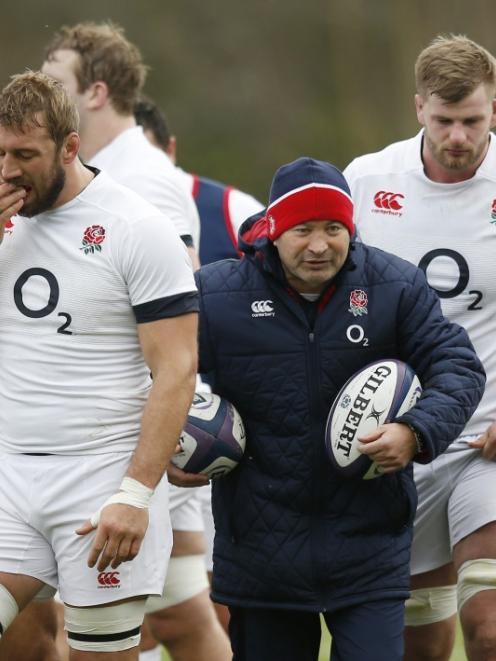
They have for their most tenacious possession thieves, whereas England have settled for ball-carrying bulk.
In the lead up to the Calcutta Cup clash in Edinburgh, much talk has been spent on England's lack of a traditional openside flanker. Chris Robshaw filled the role during their ill-fated World Cup campaign last year and James Haskell will fill it this weekend. Both play on the blindside for their clubs.
This is an area where their northern neighbour, despite their limited player pool, have strength in depth. Scotland start John Barclay and John Hardie, both of whom usually play at openside, and have a third openside, Blair Cowan, on the bench.
The traditional openside is fast and dynamic, as they cover the side of the scrum furthest from the touchline. They are often first to a tackle or contact area where they must try to nullify the opposing attack and pilfer the ball.
Players used to covering the narrower blindside of the pitch tend to be bulkier, strong tacklers and are used to add ballast to the scrum and as a wrecking ball in attack.
In the professional era of the sport, many argue these traditional definitions are less relevant and that flankers must be proficient in all areas.
During the World Cup current England coach Eddie Jones, then working as a TV pundit and as coach of Japan, described Robshaw as a "six and a half".
He was not being complimentary, but he appreciates the former captain's solid presence and said last week he felt he could become world class on the blindside.
Disruptive influence
A glance at this season's statistics from the Aviva Premiership shows there is a deficiency in the England team where Scotland can get the upper hand.
Sky Sports placed Haskell ninth in its list of breakdown steals by English-qualified flankers, making just four steals in 11 appearances, tied with Robshaw who made four in 10 matches.
Jack Clifford, who has taken Robshaw's No 7 shirt at Harlequins and is on the bench for this weekend's match, lies 16th with three steals in 14 matches.
If Scotland's dominance in this area swings the balance in their favour, Jones may be accused of making the type of selection errors that cost his predecessor, Stuart Lancaster, his job.
He has spurned the services of Gloucester openside Matt Kvesic, who tops Sky's list with 15 steals in 12 games, for this week's Six Nations opener.
Scotland can at the very least hope to disrupt England and gain more possession by targeting the breakdown.
The best scenario for Scotland is that England's players give away penalties for holding on to the ball in the tackle, allowing Greig Laidlaw to rack up the goals that have so often proved the difference in this fixture.
Utilising fetchers was a tactic Scotland employed in their heart-breaking World Cup quarterfinal defeat to Australia in a bid to neutralise Michael Hooper and David Pocock.
The selection is as deliberate now as it was then. Coach Vern Cotter has chosen to leave out the hulking figures of Adam Ashe and Josh Strauss, often employed by their clubs on the blindside or at No 8, while the favoured blindside during the World Cup Ryan Wilson did not even make the squad.










